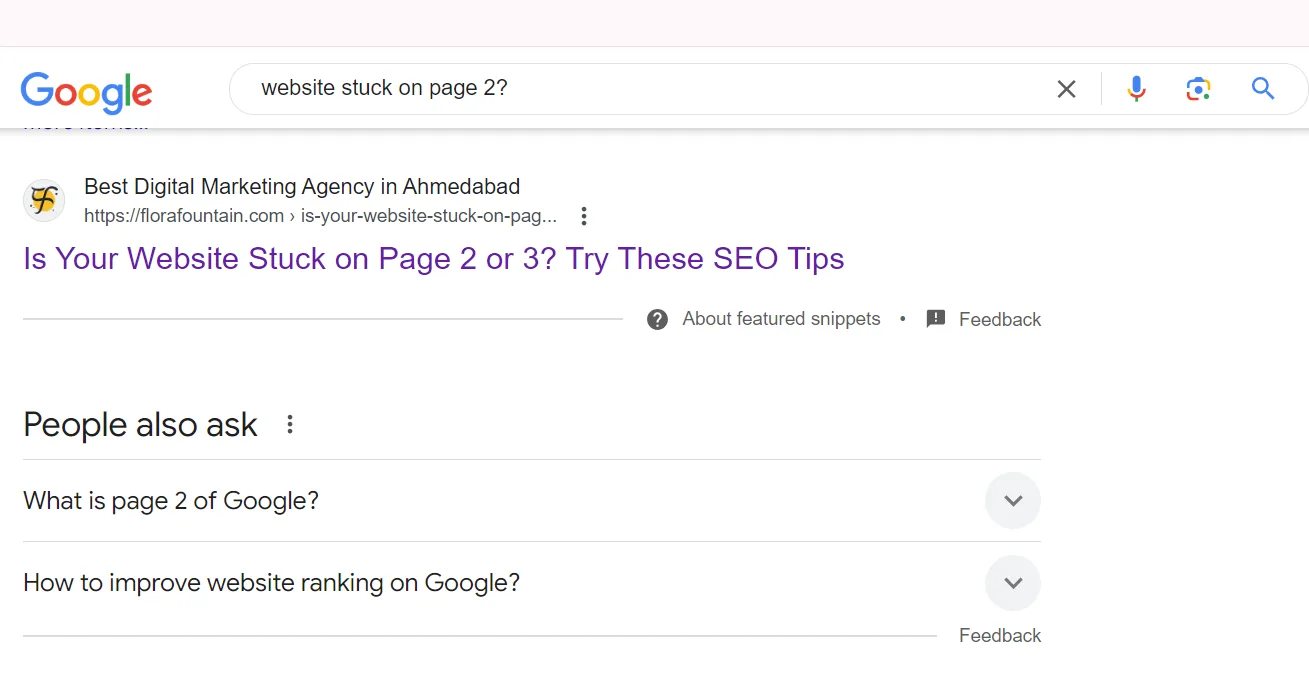
You developed a fully functional website and dreamed of getting leads from the site itself. However, it turns out you are not getting that many clicks. Now, you are left questioning what to do next to drive traffic to your website.
One of the leading reasons could be that people are not finding your website among the results of their search on the internet. If you want to get more clicks, you need to improve your search engine rankings. There’s no way around it – higher rankings lead to more visibility and more visibility leads to more clicks.
Websites that rank in the top three search results capture over 54.4% of all clicks. That means your click-through rate (CTR) increases as your rank improves.
So, how can you optimise your website to improve your CTR, drive more clicks and ultimately boost your online presence? Here are some practical and advanced SEO strategies tailored for 2024 and beyond.
Table of contents
- Click Through Rate (CTR)
- Write Attractive Titles and Meta Descriptions
- Improve Keyword Strategy
- Optimise for Featured Snippets
- Implement Schema Markup
- Creating High-Quality, Relevant Content
- Align SEO with Voice Search
- Speed Up Your Website
- Build Strong Internal Links
- Make Your Website Mobile-Friendly
- Conclusion
- Frequently Asked Questions
1. What is Click-Through-Rate (CTR)
You did come across the term CTR, but what exactly is CTR and why does it matter? CTR or click-through rate, is the percentage of users who click on your website link after seeing it on the search engine results page (SERP).
It’s a key metric that tells you how appealing your content is to searchers. A high CTR means your title, meta description and content are resonating with your audience, while a low CTR indicates that something’s off.
Now let’s look at ways you can improve the click-through rates of your website.
2. Write Attractive Titles and Meta Descriptions
Your title and meta description are your first impression on the SERP. They need to be compelling enough to make users want to click. Think of them as the headlines that sell your content.
To make them more impactful use powerful words like “Ultimate” “Proven” etc to make your title more attractive.
Then, use numbers if possible in the titles. Because numbers are highly eye-catching. Also, try to use your target keywords in the meta title and description. But don’t overdo it. It should feel natural and relevant.
3. Improve Keyword Strategy
You’ve got to be smart about using keywords. Don’t just target popular keywords. Here’s what you can do to improve your keyword strategy. Go for long-tail keywords. These are longer and more specific phrases that users are likely to search for when they’re close to making a decision.
For example, if you are an ethnic wear brand, use keywords like “ethnic wear” and add keywords like “women’s ethnic wear” or “anarkali dress for women”.
Additionally, understand the intent behind the keywords. Are users looking to buy, learn or just browse? Align your content with what they’re searching for.
4. Optimise for Featured Snippets
Feature snippets appear at the very top — even before the first search result. In technical terms, it’s called zero-click search results. See this image and you will know.

Google shows featured snippets to provide the information directly to the user. To optimise in featured snippets you can structure your content to answer common questions. Google loves to pull these answers for featured snippets. And make sure those answers are short.
5. Implement Schema Markup
Schema markup is a form of microdata that helps search engines understand your content better. Basically, you are required to add a small code to your web page to help the search engine crawl and get a precise understanding of your content.
But what difference does it make? — you might wonder. So here’s how a website with schema markup looks like in search results.

And here’s how a website looks without schema markup

Which one looks attractive? First one right? That’s why it’s essential to implement schema markup. Hire a web development company to help you with the same.
6. Creating High-Quality, Relevant Content
Your content needs to be high-quality, relevant and tailored to your audience’s needs. Google’s algorithms are designed to reward content that offers value. So make sure your content is both informative and engaging.
Here’s a content checklist you should follow to rank higher.
- Aim for 1,500-2,500 words for a comprehensive piece that covers a topic thoroughly.
- Break up your content with images, videos, infographics and charts.
- Make timely changes to your content by enhancing content, adding keywords etc.
7. Align SEO with Voice Search
Voice search is on the rise. More people are using voice assistants like Siri, Alexa and Google Assistant to search online.
In fact, it’s estimated that 75% of households are expected to own a smart speaker like Google Home or Amazon Alexa by 2024.
To capture this growing segment of users, you need to enhance your SEO strategy. To do this, you just need to be clever with keywords.
Voice searches are more conversational and often framed as questions. So you can include those keywords that mimic how people naturally speak.
For example “ Where can I find the best digital marketing agency in Mumbai?” This kind of optimisation helps you rank higher when potential clients use voice search to find immediate services.
Get More Traffic to Your Website
8. Speed Up Your Website
A slow website is a big no-no. People are impatient online. If your site takes too long to load, they’ll quickly move to another website.
To speed it up, compress large images. However, ensure that it doesn’t hamper the quality. Lastly, clean up your HTML, CSS and JavaScript. No need to go deep here. Just contact a web development company and communicate the same.
And you will get your work done in no time.
9. Build Strong Internal Links
Internal linking helps you keep users on your site longer. For example, a user is reading a blog. He/she loved that blog so much that he or she is interested in learning more.
And then give a link to another blog. This way they will stay on your site for a longer time.
It’s not just for users. Internal linking helps search engines understand the structure of your site and the relationship between your pages.
So hire an SEO company and ask them to build internal links with relevant content.
10. Make Your Website Mobile-Friendly
Mobile devices account for more than 60% of the website traffic. So, if your website isn’t optimised for mobile, you are seriously losing out.
To make it mobile-friendly you just need to have a responsive design with easy navigation and fast load time.
What this means is to simplify it as much as possible. Include small buttons on the web pages to make it easy for users to go from one page to another.
Conclusion
If you are thinking that just making minor tweaks to your website will skyrocket your traffic, you are in a huge bubble. Sorry to break it but, you need to upgrade your SEO efforts in order to maximise traffic to your website.
You need to optimise keyword strategy, implement schema markup, make sure it’s mobile friendly and lastly align your content to appear at the top in feature snippets. If you need help navigating these complexities or want to ensure your website is fully optimised for 2024 and beyond, reach out to us at hello@florafountain.com.
We help businesses like yours drive more traffic, boost conversions and ultimately increase revenue.



